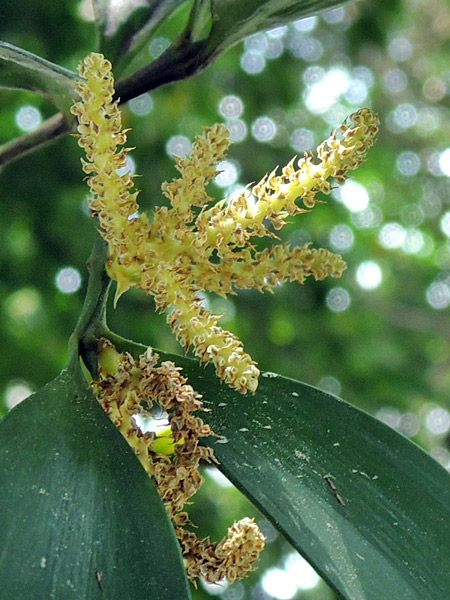Nageia nagi
The Asian bayberry is an evergreen tree whose Chinese name derives from its bamboo-like leaves and cedar-like wood. In traditional Taiwanese culture, it is often regarded as a plant with auspicious connotations. Its evergreen nature symbolizes longevity and resilience, and it is believed to have the power to ward off evil spirits. As a result, it is commonly found around traditional buildings and religious sites.
The Asian bayberry is a dioecious gymnosperm. Male plants produce male cones that resemble small yellow corn cobs around April each year. Female cones on female plants are mostly solitary and grow in the leaf axils. The seeds are spherical and deep purple when ripe.
The seeds of the Asian bayberry are round and plump, with thick new leaves that have a shiny green luster and an adorable appearance that often attracts people's attention. The seedlings grow slowly and have a long viewing period, making them ideal for seed potted plants. With a simple planting process, the seeds can be transformed into small green plants, which are very popular in the market in Taiwan.
The Asian bayberry is distributed in Taiwan, southeastern China and Japan. It can be found in broadleaved forests at medium to low altitudes throughout Taiwan, but wild populations are extremely rare. Collection records are more abundant in the northern mid- to low-altitude regions and the mountainous areas of the Hengchun Peninsula in the south. Due to its upright form, dense foliage, year-round greenery, and glossy leaves, combined with its ease of survival, slow growth rate, and minimal pruning requirements, it is highly suitable as an ornamental plant for gardens and parks, where it is commonly found in many public green spaces. The Asian bayberry has shade-tolerant characteristics, and its seedlings are well-suited for indoor environments with low light levels, making them easy to care for and a common indoor ornamental plant. In this museum, it is planted in the Monsoon Rain Forest Area and along the circular hill trail in the Central Lowland Area of the Botanical Garden.

